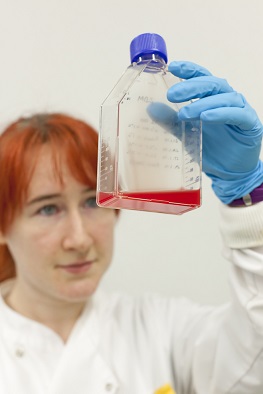Published: 25 April 2022
New research published today in Antimicrobial Agents and Chemotherapy, shows that the well-established group of antimalarials, known as artemisinins, are unlikely to be affected by resistance. The research provides evidence that these drugs should continue to be used in combination malaria treatments without fear of their efficacy decreasing.
The study, led by researchers at St George’s, University of London, explored the mechanisms that artemisinins take advantage of in order to clear malarial parasites from the body. They had originally found that artemisinins inhibit an essential calcium pump in the cells of malarial parasites. Building on these and others’ observations, their findings suggest that the drugs also inhibit other targets, making resistance to treatment less likely to arise.
In recent years, the time it takes for malarial parasites to be cleared from the body following treatment with artemisinin combination therapies (ACTs) has generally increased. Although this doesn’t necessarily result in treatment failure, it has raised concerns about a possible risk of artemisinin resistance, particularly in the Greater Mekong region in South East Asia. With antimalarial drug resistance being considered a threat to global control efforts, the research group sought to understand whether suggested resistance to artemisinins should give rise to concerns.
By developing a screening tool to test the mechanisms of different drugs in yeast cells, the research group were able to clarify how artemisinins might kill malarial parasites. The results showed that when the yeast cells were drugged with artemisinins, the yeast cells stopped growing, and that a particular calcium pump had been targeted by the drug to kill them.
Results with this screening tool and from parasites suggested that artemisinins are very likely to target not only the calcium pump but other targets in malarial parasites, included in a list of between 64 and 123 potential targets suggested by other groups. Because of these interactions with other possible targets in the cells, the chance of resistance to artemisinins decreases, as the parasitic cells would have to develop multiple routes of resistance to the drugs. Further work is required to understand which and how many of these additional targets are important for stopping parasitic cell growth. Once uncovered, findings could open avenues for other drugs to be developed as well.
The researchers also hypothesise that even if resistance could be developed, then this could cause further weaknesses in the parasites, making them more susceptible to other treatments. This is known as ‘fitness cost’, and arises when organisms develop resistance to certain treatments because the price of resistance is a poorer chance of survival under normal circumstances due to other weaknesses.
Professor Sanjeev Krishna, senior author on the paper from St George’s, University of London, said: “These results are powerful reassurance that artemisinins can continue to considered as extremely useful for treating malaria. Clinicians no longer need to be immediately concerned that using artemisinins could increase resistance and the artemisinin drugs should remain an essential part of treatment pathways, whatever the delay in parasite clearances that are sometimes observed.
“Our findings show that attention can now be focused on overcoming resistance to other antimalarials, with greater investment required in finding new partner drugs to be used in combination with artemisinins.”

The research team also intend to use the yeast screening tool to discover new drugs or repurpose existing drugs that could target the same calcium pump as artemisinins.
By uncovering the mechanisms by which artemisinins interact with different targets in cells, this research could also be of importance in understanding how artemisinins could be used to treat other conditions, for example in certain cancers and for Covid-19.
Dr Cathy Moore, first author on the paper from St George’s, University of London, said: “We have proven that the screening tool we developed for evaluating drug mechanisms can be used in multiple ways. We can not only investigate treatments both in living organisms and in cells, but also the effects of mutations on their sensitivity to drugs and ability to survive.
“Our next steps are to build on this even further by uncovering additional drug targets for artemisinins and therapies that can exploit these targets in malaria and other conditions.”
Highlighting one potential limitation of the study, the authors note that although the yeast tool is effective in identifying potential targets, yeast cells do not have comparable life cycles to parasitic cells. This could mean that any drugs that are shown to be effective in yeast cells may not be as effective in certain stages of the parasitic life cycle.
Pedro Alonso, Professor of Global Health at the University of Barcelona, who was not part of the study, said: “Emergence and spread of antimalarial drug resistance in Africa are likely to become one of the main challenges to control efforts in the most affected continent. This work is a timely and major contribution to the discussion and particularly reassures us on the efficacy of artemisinins and the need to focus our attention on the partner drugs.”
You can find out more about the work of the Institute for Infection and Immunity at St George's on the institute webpages.